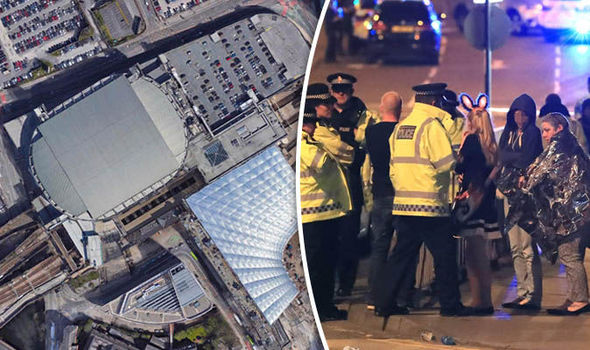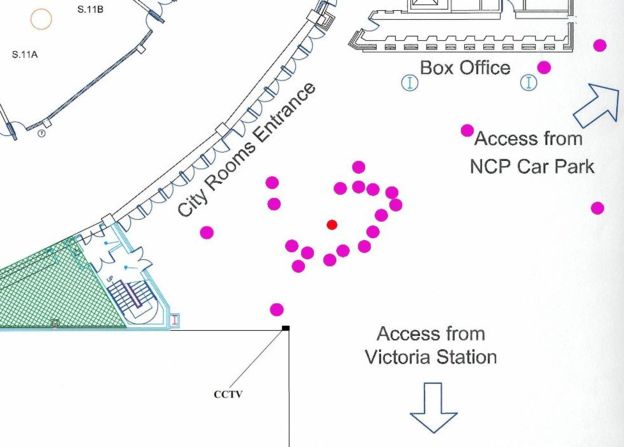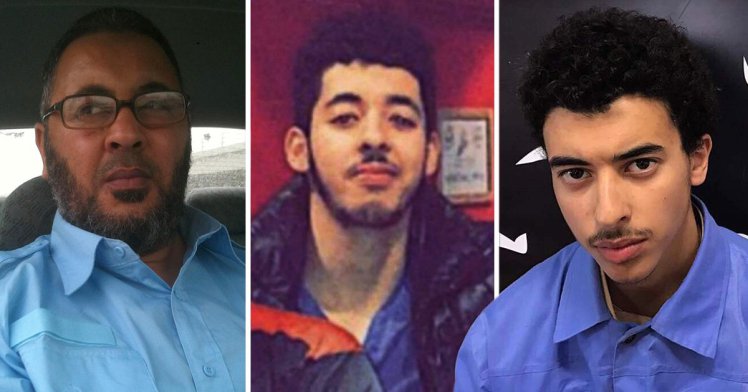
The BBC aired a documentary about the Manchester Arena attack this week entitled ‘The Night of the Bomb.’ It retells the emotional story through the eyes of survivors, police, and emergency responders, with added insight from other experts.
The piece has been strongly criticised by Greater Manchester Police chief constable Ian Hopkins on grounds that it used “explicit” content and inferred that officers and their staff were held back from entering the arena. However, upon review, there wasn’t any imagery that hasn’t already been shown to the public before and very little of it could be considered gory. Furthermore, the claim that responders had been held back was levied at the ambulance and fire services, not the police – who were first on the scene and immediately entered and secured the foyer.
There are several reasons to be critical of the documentary or angered by the issues it raises, but Hopkins seems to be barking up the wrong tree.
CCTV Clarification
For the first time, an official has gone on record confirming that CCTV from within the foyer where the bombing occurred exists and was used to help identify alleged bomber Salman Abedi.
This was not shown during the broadcast.
Chief Inspector of British Transport Police, Andrea Graham said they noted a person at “the point of the blast” and they tracked them “back to make sure we knew what we were dealing with and we weren’t dealing with a number of people” – i.e. assessing whether there were multiple attackers.
When asked if she identified the bomber immediately during the rescue effort, she said: “Yeah…purely by the description of what we can see on the CCTV of the person before the blast and the person after the blast.”
This suggests a continual stream of video of the blast itself exists. While we don’t get to see any of this, audio is heard of an officer making the request for the CCTV and to get “everything downloaded.”

Prior to this, CCTV of the foyer was only alluded to in a diagram entered at the inquest opening last year. Nobody actually knew whether footage itself existed. Other CCTV was shown publicly by the media but only showed Abedi in the hours and days prior to the bombing, not at the arena itself.
We can now expect this new foyer footage or stills from it to be entered as evidence when the inquest continues this summer.
At this point, it’s worth making the distinction that Graham says she identified the bomber in the immediate aftermath of the blast, not that she identified the bomber as Salman Abedi. That would presumably come later.
Which brings us to Abedi’s decapitated head …
Facial Recognition
During the initial coverage of the bombing, there were references made to facial recognition technology being used to help identify Salman Abedi. Exactly what that involved was never made clear. However, Nick Sedgemore, British Transport Police Director of Intelligence says a photograph was taken “of the head they found at the scene” and with facial recognition technology, it was compared like a fingerprint to other faces to get a match.
Prior reports also make mention of fingerprints, dental records, and DNA, as well as a bank card in Abedi’s name.
Due to conflicting eyewitnesses and media coverage, exactly what condition Abedi was in, where his remains were discovered, and whether they were tampered with, cannot be explored further until the inquest. No official location or coroner report has been released.
‘Some Links to Al Qaeda’
In terms of context, the documentary doesn’t tell us anything we don’t already know and glosses over important aspects.
The Abedi family are initially described as innocent refugees that fled the Gaddafi regime, rather than dissidents linked to the Libyan Islamic Fighting Group, which carried out terror attacks to overthrow Gaddafi. There is zero mention of Salman’s father Ramadan Abedi (a key figure in this important backstory) or MI6 and the British state’s direct involvement in backing extremists against Gaddafi.
It gets about as deep as saying “some” Libyans in the Manchester-based community had “links to Al Qaeda.”
Well yes, so did our own government!
Instead of asking the tough questions, there are several minutes spent on Salman’s school days, hatred of women and inability to get attention from girls. “I’ve never seen him around a girl … ever,” said one anonymous girl.
Perhaps he was probably an ‘incel’ and that’s why the bombing happened.
Our Kid In Libya

A local Manchester journalist does mention that Salman “fought on the frontline” in the “civil war” in Libya and that this is an obvious route to radicalisation, but the documentary again fails to dig deeper into the British state’s own involvement in that war.
The Abedis were allowed to travel to and from Libya with MI6’s blessing. The lifting of control orders (surveillance and travel restrictions placed on extremists) came under Theresa May’s watch as Home Secretary. It was nothing short of a policy to directly support Islamic terrorists.
Four days before the attack “we’ve got him coming back on the plane from Libya,” said Dept Supt, Sedgemore.
This isn’t a family coming back from a summer holiday in Spain. This is a young man returning from a terrorist war zone!
We then learn that he visited ISIS recruiter Abdalraouf Abdallah twice in prison. Nobody thought to follow that up?
The boldest admission comes from David Anderson, QC, author of the Home Office’s Intelligence Review.
“In the three or fourth months before the attack, MI5 did receive two pieces of intelligence which we can now see were extremely significant,” said Anderson. But, when asked what they were, he hid behind national security.
Was he referring to intel from the French that Salman may have travelled from Libya to Syria to become further radicalised? Or the tip-off from the FBI to keep a close eye on him because he may have been planning to assassinate a political figure? Or the five times authorities were warned by the community of the danger he posed?
“I’d love to be able to tell you, but there are all sorts of reasons why the sources of intelligence need to be protected.”
Would it make MI5 look bad, perhaps?
Anderson went on to say this secretive intelligence was “misinterpreted” and they probably should have stopped Abedi when he returned to the UK from Libya.
You think?
At the least, this is criminal negligence at the hands of the security services!
Who Watches the Watchers?
The Intelligence and Security Committee (ISC) is parliament’s dedicated committee tasked with scrutinising MI5.
It just so happens that it was shut down prior to the general election and just before the Manchester attack. Throughout all the terror-related incidents last year parliament failed to appoint a new committee, so there was no formal way to hold MI5 to account for their actions.
Instead, the secretive agency decided to do their own internal reviews and David Anderson, QC, was later tasked with reviewing their reviews, with no additional powers.
That’s what we call a whitewash.
You can learn more about the ISC debacle via Andrew Defty’s blog @ the University of Lincoln, which is dedicated to researching ‘parliamentary scrutiny of the British intelligence and security agencies,’ and Tom Secker’s Medium article, which breaks down Anderson’s report and the Manchester attack specifically.
‘No Way’ He Made the Bomb

One issue raised, which WideShut has covered extensively, is the development of the bomb. Once again we’re told there’s evidence of Salman “purchasing all the necessary stuff to make a bomb,” even though his brother Hasham says he was the one who bought the materials. A clear contradiction that could be cleared up if British authorities put at least some pressure on Libya to extradite him.
The official story so far is that Salman learned bomb-making himself online and cooked it in a flat not far from the arena, with no mishaps or test-runs. But, we’re also told the device was very sophisticated and consisted of the highly volatile TATP compound that Jihadis don’t use in war zones because it tends to backfire.
Salman’s own former school teacher says he doesn’t believe he could have made the bomb alone. “I’ve spoken to the teachers who taught him science and there’s absolutely no way because it’s not simple … I really think he’d have someone having to guide him,” he said.
So, we still have these competing narratives of a dumb Libyan extremist with an obvious wider support network and a self-radicalised and self-taught genius who did most of this alone. The latter is the least likely, but perhaps the most forgiving to the security and intelligence agencies.
Emegrency Services Stood Down
If true, one incredibly sad and frustrating issue highlighted by the documentary was the poor emergency response to the attack. Because of the fear of secondary explosives and rumors of shooters, medical teams followed a procedure that restricted them from setting-up in the foyer. Instead, only some volunteers went in to treat victims directly and this resulted in the injured being carried out to ambulances on metal guard rails and advertising boards, instead of stretchers from the ambulances.
Furthermore, the Fire service is said to have had a very limited role, collecting used oxygen tanks after the fact, while many police did not aid victims as their primary role was to secure the area – a legit claim Police chief constable Ian Hopkins might want to contest.
Although no date is set, the two inquests (one for the victims and one for Abedi) are expected to recommence this summer.




